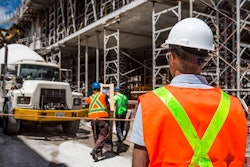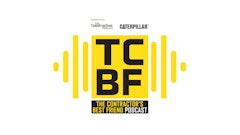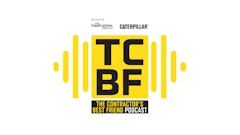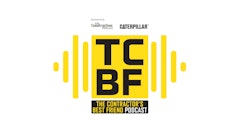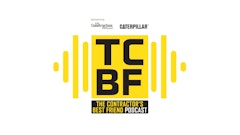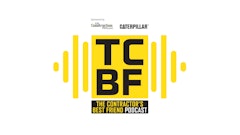
Project managers have certainly increased in their importance to their companies, the projects they work on and the construction industry at large. It is the project manager, commonly known simply as the PM, who must possess both knowledge of constructability issues, processes, and many of the same technical aspects of a project as their superintendent AND possess a firm hand on the documentation that supports the project.
It is the PM that often provides information from the field to the office; who oversees the financial side of the project; often acts as the go-between among the contractor, customer and suppliers; and is the back-up for the superintendent. In short, PMs must be multi-skilled, know how to read and interact with people, and have the “patience of Job” as they endure the many imperfect performances of those contributing to their project.
When a project is running behind schedule or over budget, it is often the PM who first feels the heat from upper management. When customers want a “live” body to voice their concerns to or lodge complaints with, it is often the PM who is at the receiving end of the communication. When many of their company project members are finished with their contribution to the project, it is the PM who is there until the “bloody end.”
For the larger specialty construction company or the general contractor the PM is a more-defined role that is part of the overall project team. In many cases PMs are college degreed and have purposely chosen the managing of construction projects as their career choice.
But for many smaller construction companies, of any specialty, the PM role might well be filled by the owner, a converted superintendent or by someone that performs both the superintendent and PM function. I’ve commonly seen the same individual who estimated the job and sold the job to also act as the project PM (when you’re a smaller company everyone wears many “hats.”)
So then, how is a PM…made? Consider the required building blocks of an effective project manager.
Block #1: An eye for detail
One common thread I’ve witnessed over the past 30 years is that most PMs have a bit more detail orientation. It’s a good thing, too, as they are often required to read between the lines of facts, measurements, amounts and quantities. PMs must also have a close eye on contracts, understanding the potential snags and have enough knowledge to “know what they don’t know.”
Block #2: Ability to initiate
The PM must be quick to raise attention to developing issues or early returns from a poor decision. PMs do not need to be hyper-reactive, but they must be quick to correct, modify and not possess an attitude of “It ain’t my job!” PMs leadership is needed and welcomed by most effective field leaders because they recognize the PMs knowledge of the project components.
Block #3: Greater project knowledge
The PM must be the one of the team members most knowledgeable about the intricate details of the project. I have found that most PMs have a more natural bent to look through the “fine print” to spot any possible issues that would throw the project off course or something that a superintendent may have accidentally overlooked. This is not an ego issue; it’s one of necessity and even survival.
Many construction leaders quietly admit that the level of complete drawings and specifications might not be as complete a package “as it used to be” at the start of a project. Yet, the contractor is still accountable to build something that may not quite be 100% completed for drawings. It is the PM that will most often stay on top of engineering and architecture firms for needed revisions and completions.
Block #4: Adaptive communication skills
Though every construction leader needs effective communication skills it is the PM that might square off against the most diverse type of communicators. From interacting with their own project team members to design engineers, architects, city or county officials; to clients, client reps; and finally to the subtrade leaders to suppliers, the PM must possess a tool box of skills and be one flexible “son-of-a-gun.”
Block #5: Professional approach & presence
As if Blocks #1 through #4 weren’t enough, the PM must conduct himself or herself with the greatest of professionalism. From sending letters, submittals, responding to RFI’s, emails, and texts, the PM must project a professional image both in his approach to interacting with others as well as his presence while engaged.
Block #6: Hungry to learn
The best always want to know more. As the old saying goes, “You snooze, you lose!” The best PMs didn’t start off brilliant, but they continue to be hungry to learn new methods, tricks of the trade, better and faster processes to keep a project focused, on-time and at or under budget!
Developing project manager traits
Now, after laying out a few of the building blocks of an effective PM, let’s briefly address how you might begin to develop these traits and skills with your PMs.
1. Assess the PM’s strengths and OFIs. Before applying any training, before sending your PM to any workshop, and before you have them read any books on project management assess where they currently are compared with the six “blocks” presented earlier. Identify the PM’s obvious strengths as well as those areas that provide the best of opportunities for improvement (OFI). Some of the “blocks” are not taught in college so you’ll need to address those growth needs for your organization.
2. “Rifle shot” your PM’s development. Based on the assessment results, consider targeted solutions for each “opportunity for improvement.” Some OFIs can be improved by attending a class on scheduling or a job costing software program your company uses. Another OFI might produce better results with the hiring of a “coach” or supporting the PM with a mentor. Scatter your development process and you risk scattered results — and not much of it will stick.
3. Match PM to “Project +1.” Assigning a PM to any project should always be reviewed for the complexity of the project, the chemistry of the project team, and the expectations and demands of the customer. However, after this assessment is made on the project the leaders should consider placing the PM on a project that is just slightly above their current level of knowledge and skill, thus the Project +1.
Always move to just stretch the PM, without placing him or her in a very obvious difficult project that he or she just does not have the skills or knowledge to lead. (Obviously, availability of what PMs are in the “bullpen” is also a consideration; unfortunately it all too often is the primary determining factor.)
4. Create a 90-day plan. This plan can be shorted or lengthened per the needs, experience and knowledge level of the PM. Hired a new PM? Create a 90-day plan that specifically identifies weekly learning points. Hired an experienced PM from another company? Create a 90-day plan to ensure that he is embracing and mastering your firm’s processes and requirements.
Both scenarios should include assigning a “coach” who meets with the PM weekly, even providing some testing at the end of the week to make sure retention is taking place. The sooner you spot those PMs who are not “connecting the dots” the sooner you can address needed improvements.
5. Be quick to correct; quick to redirect. This sounds almost too simple, but it’s often not part of a good training process. Your newly hired PM, younger or experienced, is going to make mistakes learning your systems. The best PMs want to know what they are doing, how they are doing and how they can be better. Don’t be nice…address needed corrections and redirect them to better techniques or knowledge.
6. Finally, maintain technical learning. There is much that has changed in just the past five years. Change is the new norm. Whether it is the science of construction, new software or just learning smarter ways of managing projects keep your PM’s mind turned into the wind for continued learning!
As contractors continue to find it difficult to hire the “perfect” employee, the search for talented project managers will be no different. Most contractors are finding that without a consistent commitment to education and training they will eventually build a PM focus that has less discipline, allows poor performance, lacks cutting-edge thinking and results in less profits.
The building of a project manager, like construction, is a combination of science and art. Begin today the science of this building project and identify those technical, process and procedural points that need to be mastered. Likewise, keep an open mind about those PMs who might display a more creative approach, one that respects the “non-negotiables” while looking for improvements that can make the project more profitable!






